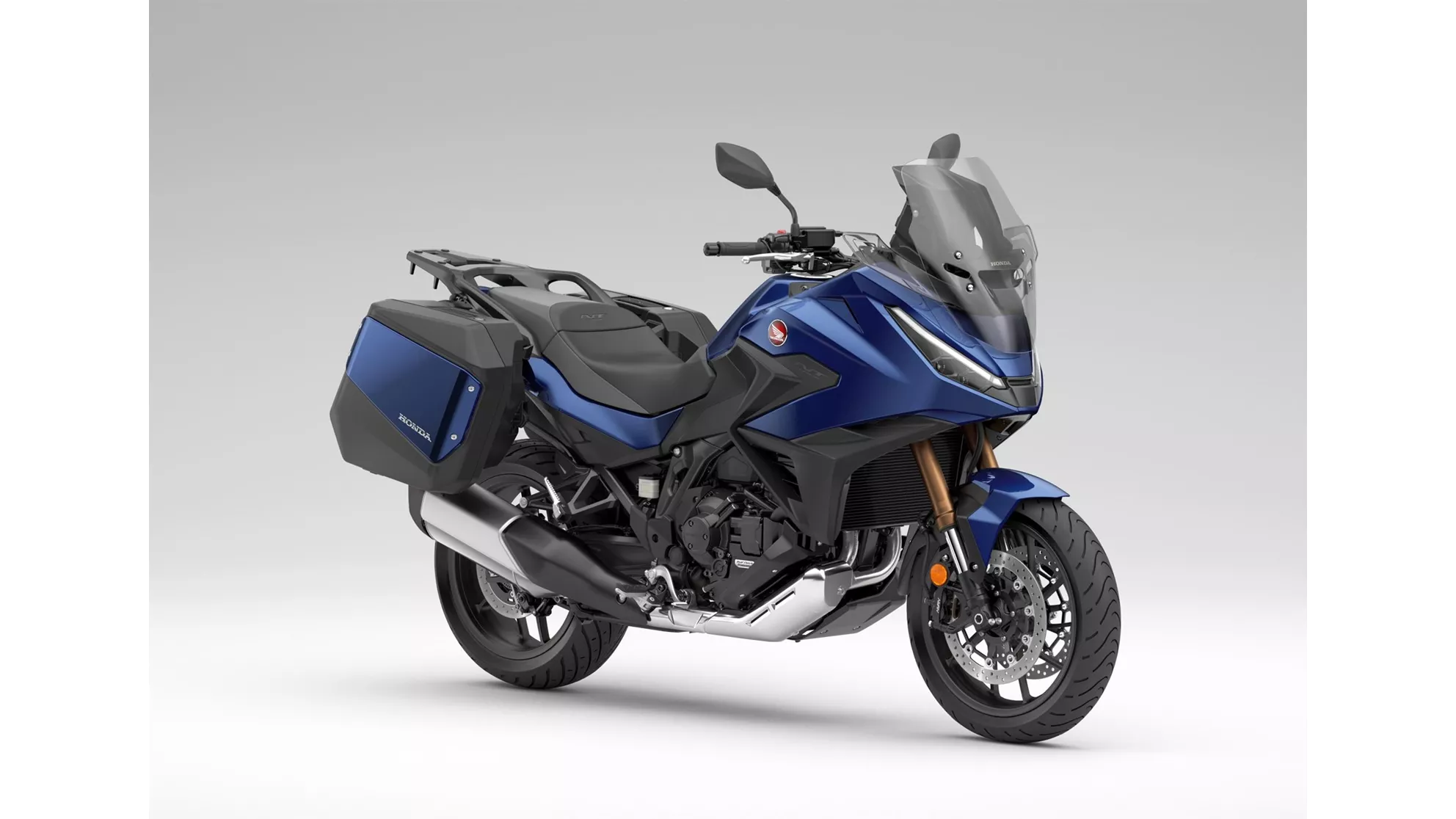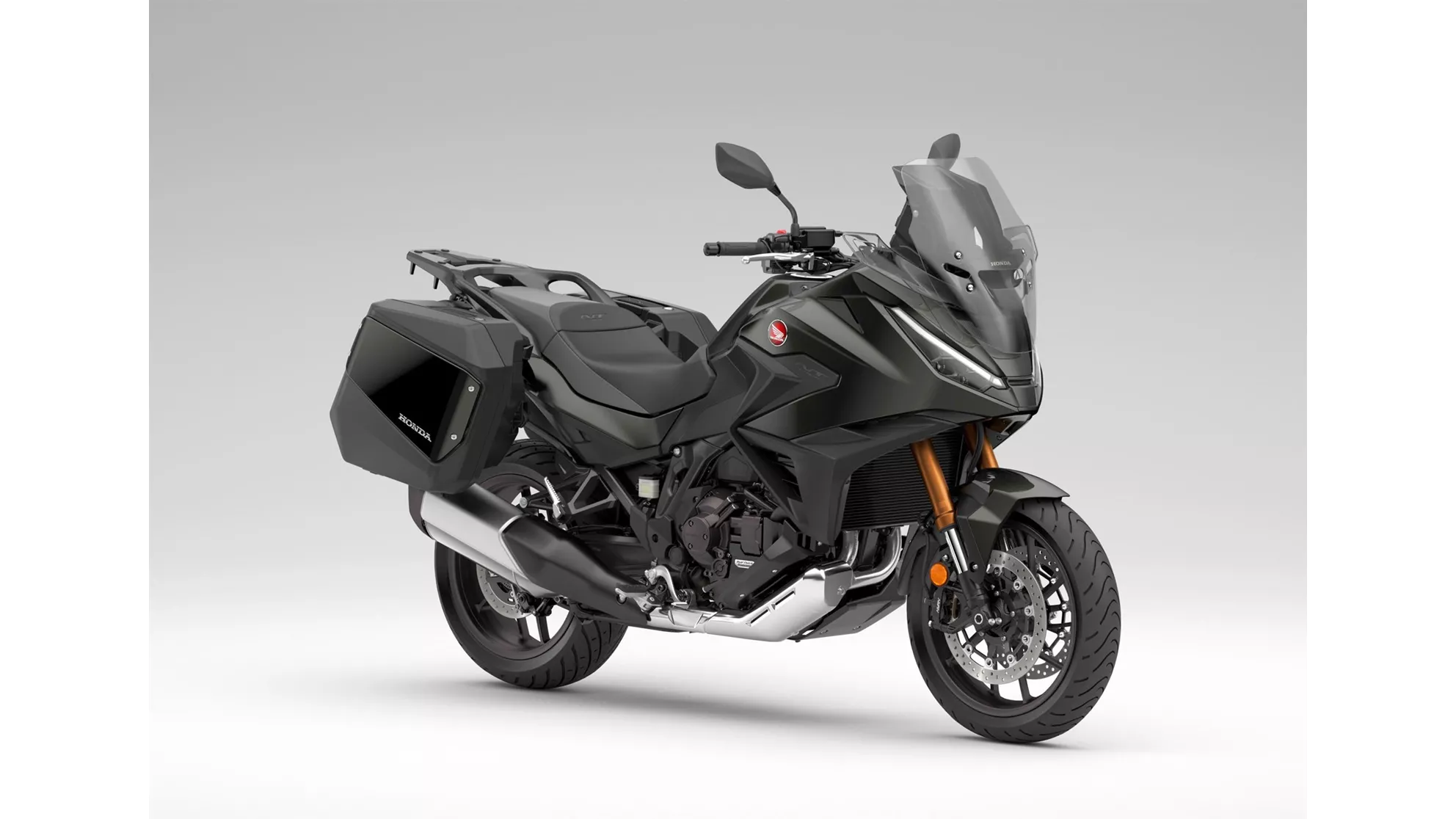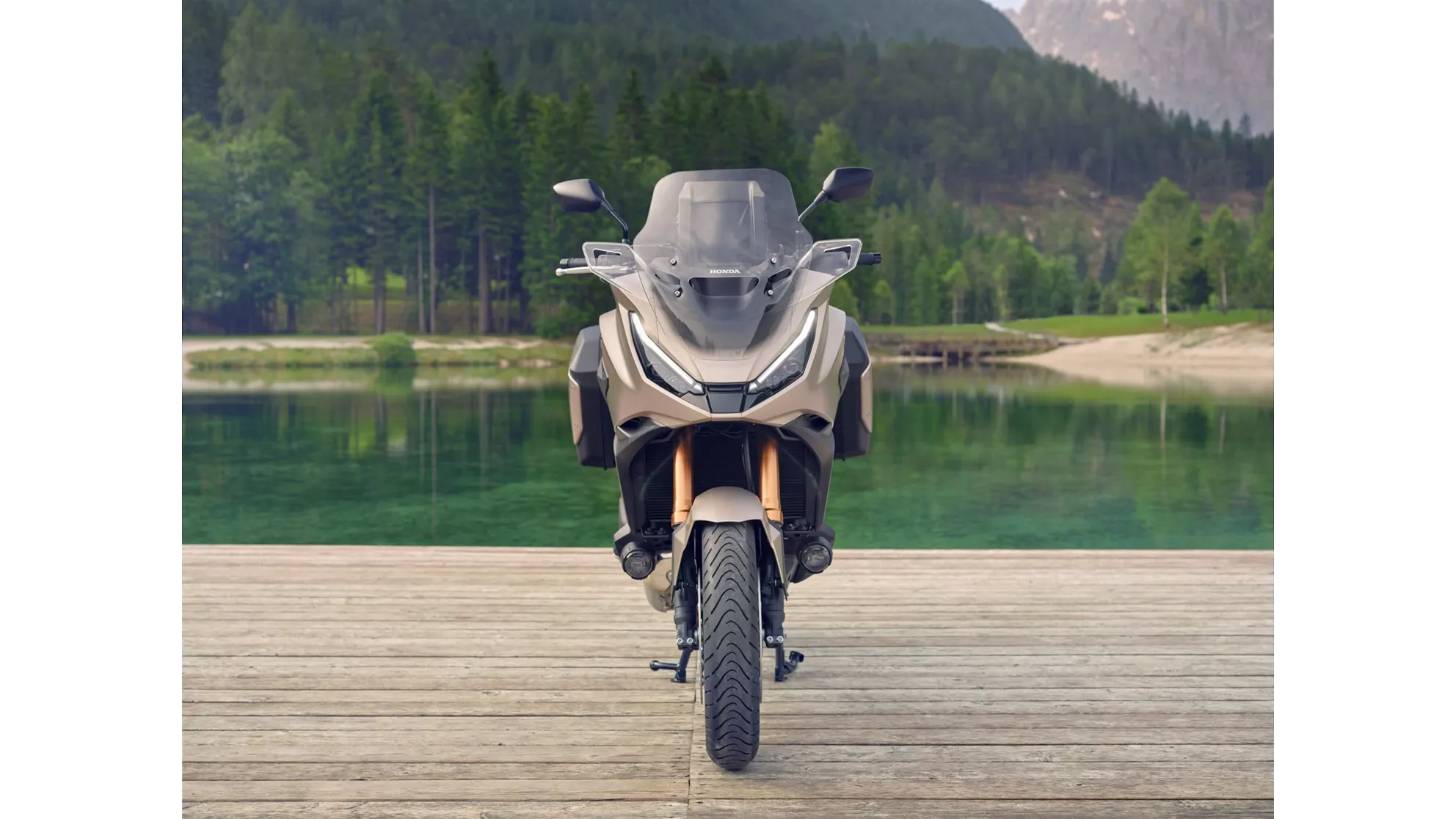The 2022 model went through a long-term test by the 1000PS crew and received both praise and criticism. Expectations for the latest release are accordingly high. Have our wishes been fulfilled? To get to the bottom of this, I traveled to Malaga, Spain, to see for myself at the official presentation of the new Honda NT1100. The anticipation was great, to test this touring motorcycle thoroughly on beautiful coastal and mountain roads in Spain at pleasant temperatures and to escape the foggy autumn weather.

Honda NT1100 Test 2025: Evolution of a Touring Bike
NT1100 DCT Electronic Suspension in Review
The Honda NT1100 has established itself as a reliable tourer since its debut in 2022. But how does the 2025 model compare to its predecessor?
&width=72&height=72&bgcolor=rgba_39_42_44_0&mode=crop)
Ewaldson
published on 11/22/2024
Engine and Performance: Enhanced Power Delivery and Increased Torque
The 2022 NT1100 relied on the proven 1084 cc parallel-twin engine, which was also used in the Africa Twin. With 102 hp and 105 Nm of torque, it was well-equipped for any tour. This 8-valve parallel-twin continues to deliver 75 kW (102 hp) at 7,500 rpm, with maximum torque increased to 112 Nm at 5,500 rpm (previously 105 Nm at 6,250 rpm). The bore measures 92 mm with a stroke of 81.5 mm. The compression ratio is now 10.5:1 (previously 10.1:1).
The NT1100 now features a throttle-by-wire system. This incorporates data from a gyroscope sensor that, through the new 6-axis IMU, captures the inertia of mass and determines the current riding condition of the bike. The throttle control of the PGM-FI fuel injection has been optimized and made more linear by reducing torque fluctuations in the lower gears.
The intake channels to the airbox have been enlarged from 25 to 33 mm in diameter to allow more air intake. 46 mm throttle bodies supply the cylinder bank's intake ports. The pleasantly smooth yet robust engine sound, thanks in part to the crank pin offset, is captivating and emphasizes the gentle yet powerful acceleration. Especially when smartly accelerating out of tighter corners, the rider feels that the engine now has a bit more punch in the mid-range. This makes cruising on leisurely tours even more relaxing.
Aluminum cylinder liners help save weight. The crankshaft with a 270-degree crankpin offset, in harmony with the irregular firing order, supports the pleasantly pulsating running culture. The pistons are longer and modified, thereby increasing the compression ratio. The engine has thus been progressively developed: from housing parts and lines to the arrangement of the oil tank, which is no longer external but internally housed within the casing, reducing the engine's overall height. This, in turn, allows us to sit nicely integrated into the NT1100, providing good feedback from the bike.
A sensitive crankshaft sensor manages the misfire detection in the 2025 model year of the NT1100, which is crucial for the precise functioning of all onboard diagnostics. Additionally, the advanced lambda sensors allow for precise measurement of the air/fuel ratios, which are also important for compliance with Euro 5+ emission regulations.
Honda NT1100 Chassis: Now Also Electronic
Our test report and the puzzlement as to why there isn't at least an Electronic Suspension variant have been noted in Japan. Given that there was already a very well-functioning semi-active EERA suspension from Showa, which is known to be available in the Africa Twin Adventure Sports, it is now finally being installed in the NT1100 upon request. In just 15 milliseconds, the suspension elements adjust to our needs. We could never be that fast with a handwheel and screwdriver.
Three preset riding modes are available: Urban, Tour, and Rain, plus two customizable settings. Of course, there is also the classic version with a 43 mm Showa UpSide Down fork with 150 mm travel and a Showa shock absorber with Pro Link linkage.
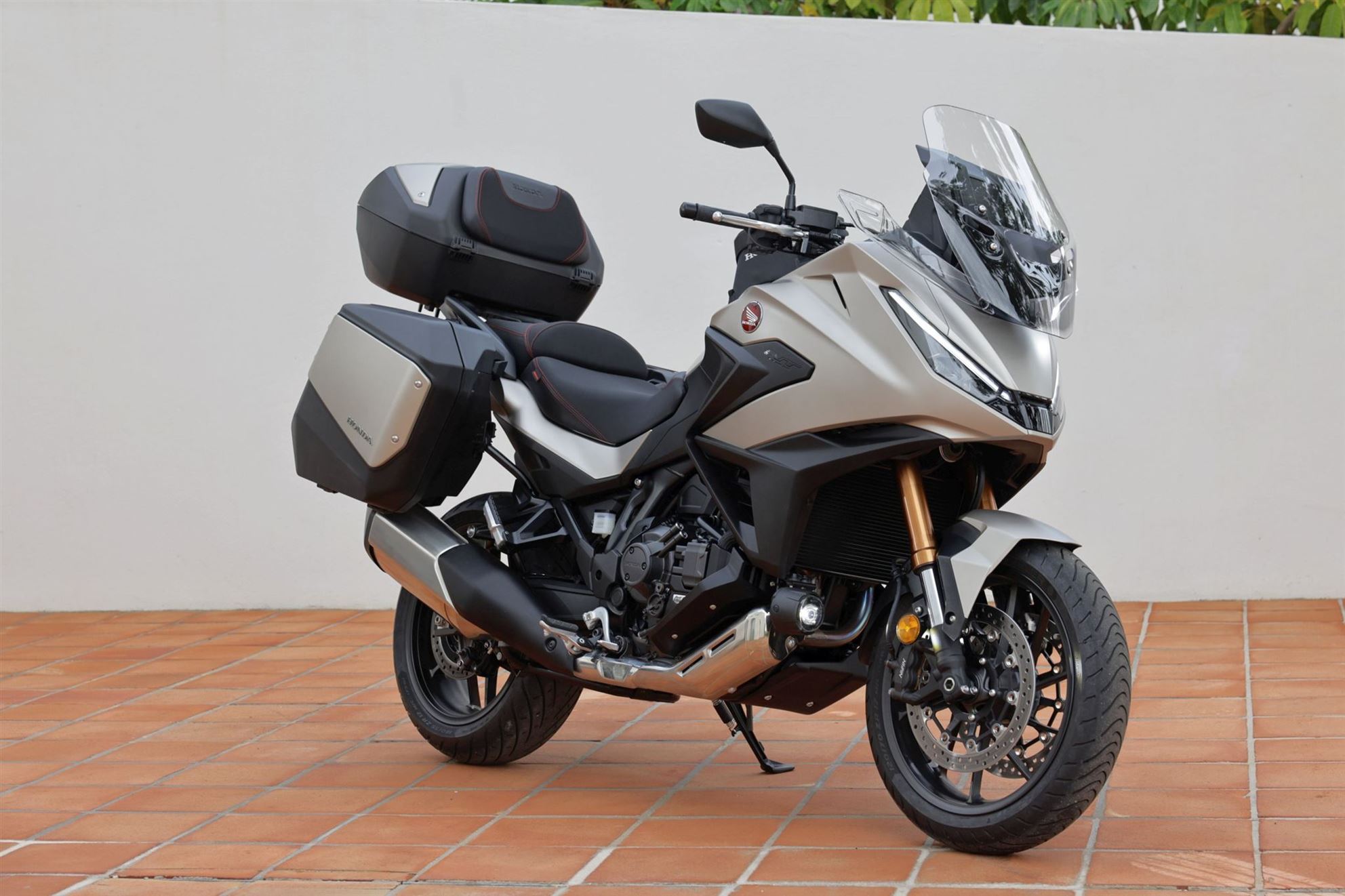
The Electronic Suspension can be identified by the golden fork.
The 2025 Honda NT1100 is available in Austria in two variants:
- Manual transmission with classic chassis
- DCT with electronically controlled Showa EERA suspension
In Germany, the variant with manual transmission and electronically controlled Showa EERA suspension components is also available.
The chassis of the 2022 NT1100 was already comfortable and offered a good balance between stability and agility. The new NT1100 is no different. Although, with its 238 kg + 12 kg luggage bags in the standard version, it is not a lightweight. The version with DCT transmission weighs 248 kg plus an additional 1 kg for the semi-active suspension.
A sporty and dynamic riding experience is only hindered by the somewhat limited ground clearance. It must be noted that in the rarest of cases, with luggage and the missus as pillion, one goes full throttle to the point where sparks fly. Of course, during our test on these fantastic roads, we sometimes give it the beans, as they say in Austria. In Germany, one might say: We become unreasonable and overshoot the mark.
DCT - A "Must Have" for Every Touring Bike
The DCT technology was revised with the 2025 model year, allowing me to groove through the hilly, twisty roads of the Spanish hinterland with ease and without significant signs of fatigue.
To enhance the features, especially at low speeds, the control is now linked with the Drive-by-Wire electronic throttle control to enable more intuitive shifting in corners. Here too, Vauli's and Poky's wishes were fulfilled, as they found this aspect not optimal during our long-term test of the NT in 2022. Specifically, the D-mode felt somewhat peculiar, causing the 2022 NT to shift up so early that hardly any smooth engine operation was achieved. This shortcoming has been rectified, and the latest generation of the DCT works fabulously in all three setting modes. It requires hardly any manual shifting interventions, which truly surprised me given the route with tight hairpins.

The DCT transmission will require hardly any manual intervention by 2025.
Three selectable operating modes are available for DCT. In MT mode, the rider shifts manually using buttons on the handlebar (but without clutching). The automatic mode offers maximum efficiency and is ideal for city to highway rides. S-Automatic allows for sportier riding in three stages. The gear changes are very smooth, relaxed, and barely noticeable. As a result, we experience minimal dynamic axle load shifts, enhancing safety on the road. Why? Quite simply: fewer pressure peaks on the tire.
Honda NT1100 2025: Engine Electronics
- Six-axis Inertial Measurement Unit (IMU) for precise control of riding modes
- Three riding modes (Urban, Rain, Tour) plus two user modes
- Three-level adjustable HSTC (Honda Selectable Torque Control) traction control
- Three-level adjustable wheelie control
Electronic Throttle By Wire throttle management and six-axis motion sensors are at the heart of the new electronics package of the NT1100. Engine power, HSTC (Honda Selectable Torque Control) traction control, and wheelie control are managed and controlled via the electronic throttle (TBW) depending on the selected riding mode. HSTC can be individually switched on and off. Three pre-configured riding modes (Urban, Rain, Tour) are available. For the freely selectable user riding modes, power and engine braking can be set in three stages.
The selection of the desired mode is made via switches on the left handlebar, where I see potential for improvement in the control concept and switch unit. The typical Honda menu requires a bit of familiarization. A display in the TFT screen is activated when the HSTC traction control is engaged. The display is clear and straightforward.

Two freely configurable user modes are available.
URBAN as the standard mode offers a universally suitable setting for power delivery and engine braking.
RAIN reduces engine power and engine braking for added safety on wet or slippery asphalt.
TOUR combines maximum power delivery with moderate engine braking and is suitable for touring with a pillion and luggage, as well as when powerful acceleration is required.
In all three riding modes, I noticed a noticeable difference, without any placebo effect.
USER 1 and 2 allow for two personalized setups. The customized user modes are automatically saved and do not need to be reset when the ignition is turned back on after stops.
The brakes do their job.
The 310 mm dual disc brakes at the front are paired with radial four-piston calipers. The rear single disc brake is equipped with a single-piston caliper. The brakes are unremarkable, allowing for controllable progressive braking and bringing the heavyweight to a stable stop in any situation thanks to cornering ABS. The intervention is smooth due to the IMU, the braking distance is average, and the rear wheel lift detection is helpful.
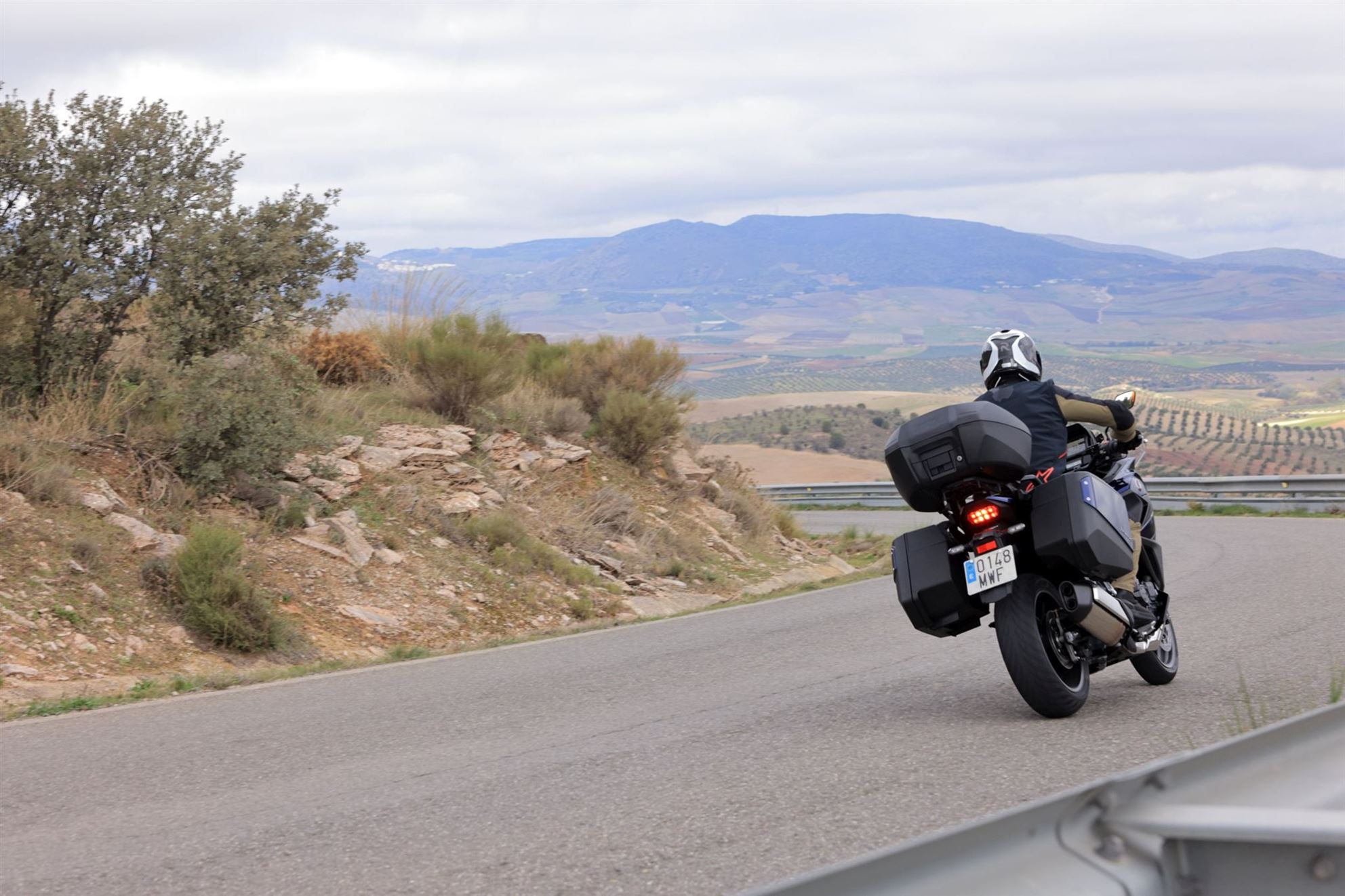
Thanks to cornering ABS, you are always riding safely.
Tires 120/70/R17 front and 180/55/R17 rear with Metzeler Roadtec 10 (same as the previous model).
Features and Comfort of the NT1100 2025
A new, larger 6.5" TFT color display with enhanced Apple CarPlay, Android Auto, and Bluetooth connectivity allows access to smartphone functions. Navigation solutions like Google Maps have been explored in everyday use with Apple CarPlay. With a little effort, it works really well, and you don't need a computer science degree to use it. A USB charging port and a 12-volt socket enable alternative navigation systems.
Just like its predecessor, the latest model comes standard with heated grips, a center stand, and an absolutely practical enlarged luggage set. This includes 36 liters on the left and 37 liters on the right. Opinions often differ when it comes to luggage sets. I am a fan of the elegantly integrated side cases in the overall design of a touring bike, while Boss NastyNils is more skeptical and prefers a top case. The 50-liter top case with an inner bag is available as an accessory in the Urban Package, complete with a comfort backrest. This makes longer tours even more enjoyable, and thanks to the alarm system, you can sleep more peacefully at night.
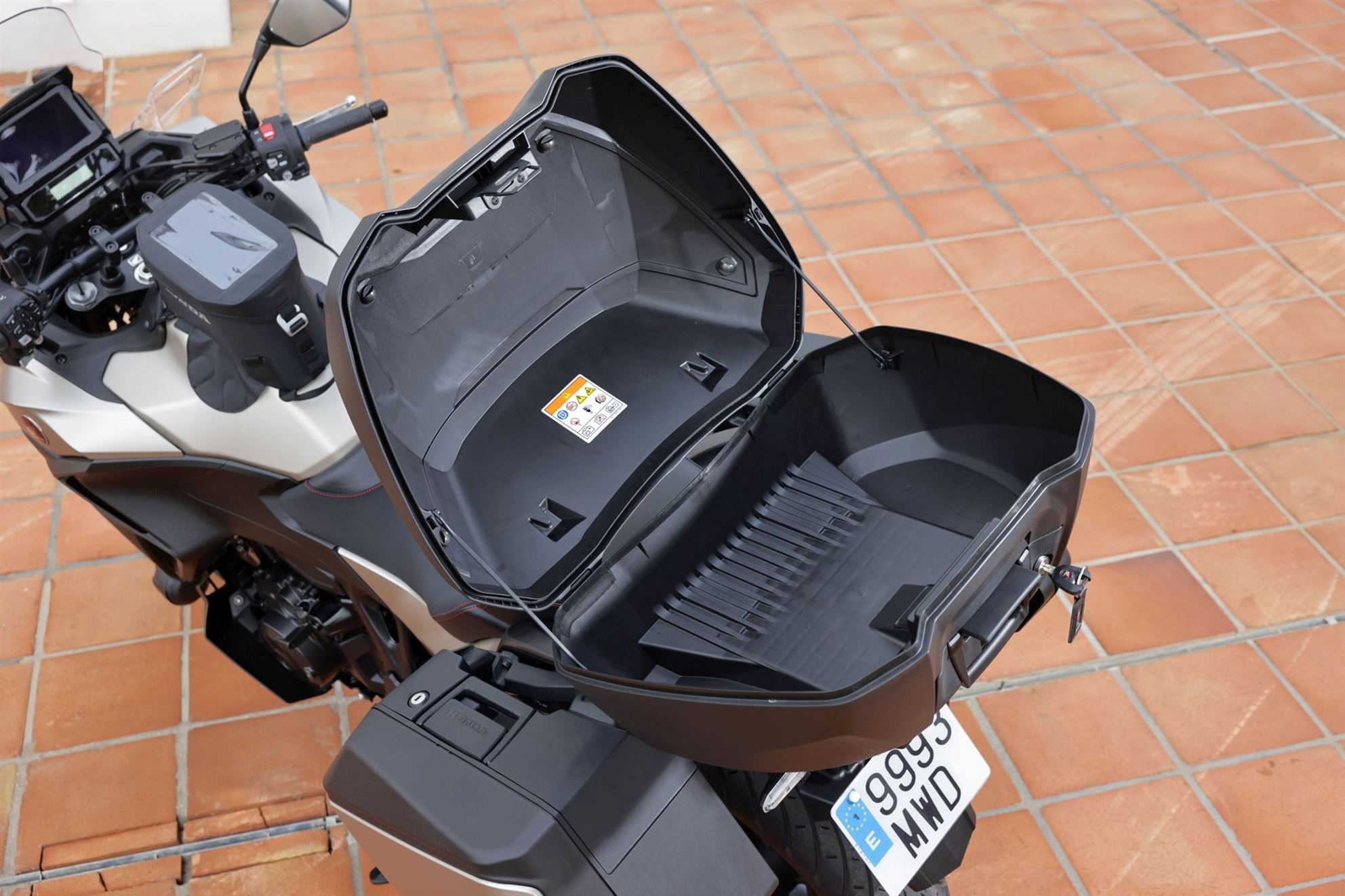
With the optional top case, you can fit a lot inside.
The build quality of side cases must truly be of high standard, otherwise, you'll constantly be frustrated with the locking mechanism, which is much more frequently used than on a top case. This works flawlessly on the new NT1100. Each side case can accommodate a full-face helmet. Tip: The Cardo system on the side of the helmet must be removed, though. A major advantage of the side cases: Mounting and dismounting don't quickly become a tipping hazard as with a top case. When dismounting, you can easily get your foot caught on the top case if you're not paying attention. If your esteemed lady is sitting on the pillion, you might not be able to avoid a top case given the maximum storage space.
For a long ride in the saddle, the seat padding has been made softer, and the seating area at the rear has been increased by 20%. The seat height remains unchanged at 820 mm, which provides a good stance for my height of 1.75 m, although the knee angle is comfortable and not too sharp. The front fender has been extended by 150 mm, and the tank is narrower.
Honda NT1100 Accessories
Honda's original accessories for the NT1100 include a quickshifter with auto-blipper function (manual transmission version only), aluminum design panels for the luggage, and brand-new decorative sticker sets in two colors. For further customization, two equipment packages are offered, with all parts also available individually upon request.
- URBAN PACKAGE: Color-matched 50-liter top case with inner bag and comfort backrest, as well as an alarm system.
- VOYAGE PACKAGE: Color-matched 50-liter top case with inner bag and comfort backrest, 4.5-liter tank bag, comfort seats for rider and pillion, comfort footpegs for the pillion, and fog lights.

Direct access to essential items like your phone or wallet.
Best wind and weather protection ever
Luckily, the weather gods in Malaga were kind to me, and the November weather was wonderfully pleasant, which further enhanced the riding pleasure. Of course, for a touring bike, a rain test would also have been of interest. How do the chosen tires perform on the NT1100, and what about the weather protection? For this, I refer to our touring motorcycle test from 2022, where Poky during his test in Barcelona and our crew during the long-term test had to cover several kilometers in the rain, and no significant changes have been made to the aerodynamics and windscreen size on the new NT1100. Conclusion: Best-in-class wind and weather protection.
The wind and weather protection remains a standout feature of the tourer. Even without significant adjustment to the 5-position adjustable windscreen, the protection for the rider is incredible. The expansive fairing at the front, combined with the standard revised additional wind deflector, keeps the rider reliably dry on both the upper and lower body. However, one must do without handguards, as these are not available even as accessories. Initially, this seemed unusual for a touring motorcycle, but the wind deflectors mounted on the sides under the windscreen actually provide optimal protection, especially at higher speeds. An extension of the front fender improves splash protection on rain-soaked roads.

Wind protection dominates the Honda NT1100.
The windshield is adjustable in two dimensions: the angle and the height, which can be altered by up to 16.4 cm. This range of adjustment provides perfect protection even for taller riders, with the wind being optimally deflected over the rider. The windshield can be easily adjusted with one hand, and here, our prayers have been answered as the Honda engineers have moved away from their safety-first mindset. If you can't manage to adjust it one-handed in a foresighted 60 seconds—this is the maximum time it takes—you might as well buy a convertible. I find it extremely tedious to have to stop every time after a leisurely ride, for instance, through urban areas, just to adjust the windshield to suit my next needs.
Honda NT1100 Design and Colors
Visually, the NT1100 stays true to its typical Honda design, but the 2025 version receives some fresh accents. LED dual headlights with new DRL daytime running lights and integrated LED indicators. A reduced rear look with an LED taillight. The design is simple and not overloaded. In the 2025 model year, the following color variants will be available:
- Mat Warm Ash Metallic NEW
- Gunmetal Black Metallic NEW
- Pearl Hawkseye Blue
The colors are classic, simple, and harmonious, but I would have hoped for a variant with a bit more zest.
- How much does a Honda NT1100 DCT Electronic Suspension cost?
- Here you will find an overview of the price level of new and used motorbikes!
&width=60&height=60&bgcolor=rgba_39_42_44_0&mode=crop)
Honda NT1100 DCT Electronic Suspension 2025 - Experiences and Expert Review
Ewaldson
The Honda NT1100 has significantly evolved from 2022 to 2025, even though it was already a satisfactory bike. While the core concept of a comfortable, reliable, and efficient tourer has been retained, numerous improvements ensure that the new NT1100 is even better equipped for long journeys. Those who already liked the 2022 model will love the 2025 version. With its smart appearance, nimble riding performance, and touring capability, it appeals to both young and old, beginners and seasoned riders, inviting them to explore the world.
More from 1000PS Magazine
Honda NT1100 Test 2025: Evolution of a Touring Bike Images
Source: 1000PS
























